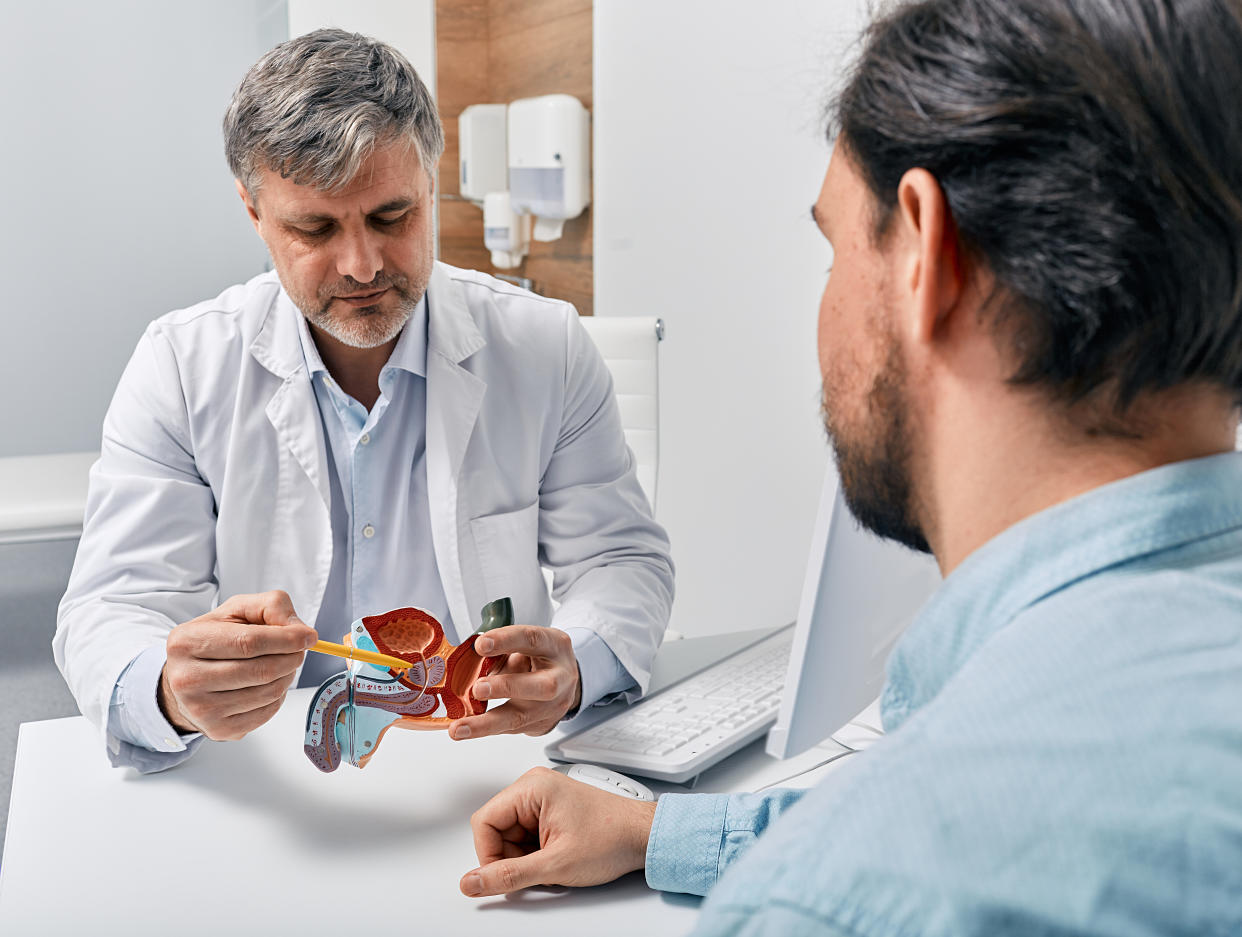What's the difference between an enlarged prostate and prostate cancer? Here's what you need to know.

Buckingham Palace announced earlier this week that King Charles has been diagnosed with cancer. The disease was discovered during his treatment for an enlarged prostate, also called BPH, or benign prostatic hyperplasia. Although officials stated that King Charles does not have prostate cancer — they have yet to specify what type of cancer he was diagnosed with — his recent prostate treatment has spurred interest in the disease.
On Yahoo Search, searches around terms including "prostate cancer" have gone up about 150% since the royal's diagnosis was made public on Monday. But there's a difference between prostate enlargement — what the monarch received treatment for — and actual prostate cancer. Here’s what to know.
What to know about the prostate and prostate enlargement
The prostate is a small gland found in men, located below the bladder and surrounding the urethra. Its primary function is to produce a fluid that transports sperm during ejaculation. The prostate can be prone to issues such as enlargement, which can affect the urinary system, but the exact cause of an enlarged prostate is unknown. Symptoms include:
Difficulties urinating
A weak stream
The need to urinate more frequently
“Dribbling” at the end of urination
These symptoms are very common; about half of 75-year-old men will experience them, according to Johns Hopkins Medicine. Treatment is necessary only if symptoms negatively affect daily life and, according to the Mayo Clinic, include medications that help relax the muscles around the prostate and shrink the gland, along with surgery to remove or reduce the size of the prostate in more severe cases. Minimally invasive therapies, such as laser treatments, are also available.
What is prostate cancer?
Dr. Jonathan Ticku, who specializes in hematology and oncology at the Mayo Clinic Health System in La Crosse, Wis., tells Yahoo Life that prostate cancer is one of the most common cancers in the world. “While many prostate cancers grow slowly and remain localized, other types are aggressive and spread quickly,” he says. “Prostate cancer may cause no signs or symptoms in its early stages.” Those who do experience symptoms, he says, may experience:
Trouble urinating
Decreased force in the stream of urine
Blood in the urine
Blood in semen
Bone pain
Erectile dysfunction
Although some symptoms can overlap, it's important to note that an enlarged prostate is not a sign of cancer and doesn't raise the risk of getting prostate cancer, according to the National Cancer Institute. If you have symptoms that worry you, Ticku suggests bringing up your concerns with your health care provider.
What are the risk factors of prostate cancer?
Age, family health history and race all play a role in prostate cancer risk, says Ticku. In the U.S., prostate cancer is deadlier for Black men than men of other races, according to the Centers for Disease Control and Prevention. They are more likely to get prostate cancer and more than twice as likely to die from prostate cancer than other men. The average age of diagnosis is 66 years old.
“If you have a blood relative who has or has had prostate cancer or a family history of genes that increase the risk of breast cancer — BRCA1 or BRCA2 — or a strong family history of breast cancer, your risk of prostate cancer may be higher,” Ticku points out.
Is prostate cancer curable?
The key to curing prostate cancer is early diagnosis, says Ticku. With improved screening and early detection, he says, “many men with prostate cancer are diagnosed when the cancer is still contained, often allowing a cure through surgery or radiation.”
It’s worth noting that prostate cancer screenings — such as prostate-specific antigen (PSA) blood tests and digital rectal exams (DRE) — are controversial because they may not always give accurate results and might lead to unnecessary treatments. The PSA test, for example, can show false positives, making some people undergo extra tests and treatments, such as biopsies, that might have side effects. There's also the concern that routine prostate screenings could find slow-growing cancers that might not be harmful, also contributing to unnecessary treatments.
“Localized prostate cancer may not need treatment right away and for some, treatment may never be needed,” Ticku says, sharing that doctors sometimes recommend what’s called “active surveillance” instead. This includes regular follow-up blood tests, rectal exams and imaging. In some cases, prostate biopsies may be performed to monitor the progression as well.
For patients who do require treatment for prostate cancer, several options are available, Ticku says. They include hormone therapy, radiation therapy and surgery, including minimally invasive robotic prostatectomy. “Talk with your health care professional to learn more about prostate cancer screening and if it's right for you,” he says.
